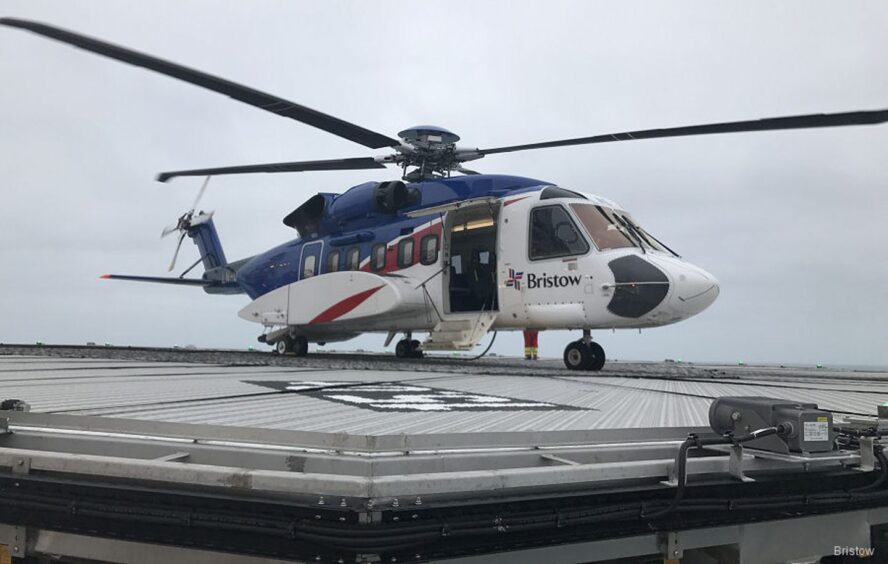
Bristow bosses expressed their ‘heartfelt condolences’ in the wake of a fatal accident involving a Norwegian search and rescue helicopter last week.
Announcing its annual results on Tuesday, the Houston-based helicopter operator (NYSE:VTOL) said the incident had been a “deeply sad and difficult time”
61-year-old Reidun Hestetun – who worked as a nurse for state-backed energy giant Equinor – died after the Bristow-operated Sikorsky S-92 crashed into the sea near the island of Sotra during a training exercise on Wednesday 28 February.
A further five crew were rescued from the water and transferred were recovered and transferred to Haukeland University Hospital in Bergen.
“On behalf of all Bristow team members around the world, I extend our heartfelt condolences to the family and friends of our dear colleague whose life was lost in the tragic SAR training accident offshore Norway on February 28, 2024,” said the group’s president and CEO Chris Bradshaw.
“This is a deeply sad and difficult time, and we will carry this loss with us always,”
“We are relieved to share that the other crew members have now either been released from the hospital or remain in stable condition at the hospital. Bristow is fully cooperating with authorities investigating the accident, and we will provide future updates as appropriate.”
Statements from Norwegian operators indicate the incident occurred during “low-altitude training flights” associated with vessel/boat hoisting.
An investigation into the incident is ongoing, after the wreckage of the aircraft was recovered from the sea over the weekend. Norwegian authorities have also located its flight recorder, which Accident Investigation Board Norway (AIBN) said would be analysed in England with the assistance of two US Sikorsky employees.
Flights in the S-92 were paused in the UK and Norway, but resumed on 1 March, after operators confirmed there are “no indications” that helicopter safety across the wider sector is reduced.
Growing demand in energy
Bristow meanwhile reported a net loss for year of $6.8 million, on operating revenues of $1.3 billion. That compares to net income of $9.2m in 2022.
During 2023, Bristow sold or disposed of eight helicopters and other assets, resulting in net gains of $1.1m. that compares with 2022 in which it offloaded twelve helicopters and other assets resulting in net losses of $0.5m.
Looking to the rest of 2024, the company pointed to increasing activity in offshore energy which has driven “a constructive supply and demand balance” for offshore helicopters.
“Given our sector’s late cycle exposure and the lag effect involving new projects, we only recently have begun to see the impacts of a multi-year growth cycle, with the second half of 2023 marking the positive inflection point for Bristow’s financial result,” it said.
It points to expectations of a tighter equipment market, constrained labour force and inflationary cost pressures this year, which it suggested would drive further rate increases. However, activity in both Norway and the UK is forecast to be “mostly stable” in the coming 12 months.
However, it also pointed to “continued supply chain shortages”, particularly those related to the S92 heavy helicopters, which are unlikely to let up during 2024.
Last year oil and gas representatives warned that a shortage of spare parts for the key airframe poses “significant safety and operational risks”.
That will be partly aided by a February deal with manufacturer Leonardo for 10 AW189 super medium helicopters plus options to purchase an additional 10 AW189 helicopters. The new units will support offshore transport as well as SAR missions.
Bristow currently operates 21 AW189 helicopters globally, with an additional five already scheduled for delivery beginning this year.
“Looking back on 2023, I want to thank and commend the Bristow team for delivering many successful outcomes last year,” added Mr Bradshaw.
“With the largest global fleet of offshore helicopters and a significant presence in key regions, Bristow expects to be a primary beneficiary of this extended growth cycle in offshore energy.”
Recommended for you
